Attorneys
A more reliable path for
Immigration Attorneys to support STEM Research
A New Tool for Helping Your Clients Host
The STEM Research Initiative provides immigration attorneys with an easier, more reliable path for helping businesses and institutions bring foreign STEM researchers to the United States.
Allowing non-immigrant researchers to remain in the U.S. for up to five years, this initiative delivers a faster, more flexible alternative, with no lottery system or date restrictions in place. Designed to accelerate American innovation, this initiative streamlines the J-1 visa process for global STEM experts— helping attorneys and their clients get qualified candidates approved in just 6-8 weeks. Read on to discover why this unique program belongs in your client toolkit.
Official White House Fact SheetSTEM Research Initiative
From startups and Fortune 500 companies to universities, the STEM Research Initiative offers an easier way for American businesses and institutions to source talented researchers from around the globe. Non-immigrant researchers can legally remain in the U.S. for up to five years, staying at one organization for the entire duration or transferring their J-1 visa between multiple U.S. companies and institutions.

Are My Members’ Businesses Eligible to Host Foreign STEM Researchers?
As long as your members’ businesses are U.S.-based, have enough resources to host foreign talent, and have at least one physical location in the continental United States, they could be eligible to bring in subject matter experts from anywhere in the world to aid in research and development efforts, new product development, academic studies, trials, and more. Eligible industry sectors include, but are not limited to:
- Engineering (all)
- Artificial Intelligence (AI)
- Robotics & Automation
- Computing & Electronics
- Software Development
- Semiconductors
- Renewable Energy and Cleantech
- Pharmaceutical & Biotechnology
- Aerospace, Aeronautical, Astronautical
- Automotive & Autonomous Vehicles
- Quantum Computing
- IT & Cybersecurity
- EdTech, AgTech, & FinTech
- Virtual Reality & Augmented Reality
- Social Science
- And more
Who Can Be Hired Through the J-1 STEM Research Initiative?
This initiative is designed for non-immigrant foreign researchers and global experts in their respective fields, especially those interested in conducting STEM research, collaborating and exchanging ideas with their American peers, and growing their professional network in the United States. While many researchers hold master’s degrees or PhDs, foreign nationals with demonstrated expertise and a minimum of a bachelor’s degree are eligible to participate, including:
- Current J-1 Research Scholars
- Foreign nationals – R&D Experts
- F-1 Graduates
- Former Research Interns & Trainees
- Foreign employees/New hires in R&D
- Non-U.S. PhD Fellows

What Roles Can Researchers Be Hired For?
For the purposes of this initiative, eligibility is determined more by job function than specific job titles. For this reason, businesses and institutions without official STEM classification can still qualify to participate in the initiative, as long as researchers’ roles fall into certain categories. Generally, positions in research and development, applied research, applied science, research roles that help generate new products or services, and similar will qualify
For more detailed information, review our FAQs.
Initiative Benefits
Short Processing Times
- Get approvals in 6-8 weeks on average
Relatively Inexpensive
- Program sponsor fees vary company to company
More Certainty. Less Risk.
- If your client’s organization and desired researcher are eligible, they’ll likely be approved
- Streamlined process with an expedient, predictable timeline
- Makes it easier for your clients to hire international talent
- No date restrictions
- Initiative backed by the U.S. State Department for fewer USCIS hurdles
Stay in the U.S. up to 5 years
- Researchers can stay in the U.S. for up to 5 years, making a meaningful impact on your institution’s research and driving innovation at U.S. based STEM businesses
Straightforward Paperwork
- Less paperwork to fill out and file
- Doesn’t require complex involvement of legal departments or outside counsel
More flexibility. Fewer Restrictions.
- Researchers can travel, lecture, and attend relevant conferences
- Easy collaboration between research Higher Ed Institutions, U.S.-based companies, and economic development organizations
- No requirement to sponsor or host researchers for the entire five years
- They can easily transfer to other research facilities, academic Higher Ed Institutions, or U.S.-based companies
- More than one site of research activity allowed
- No caps on the number of researchers your organization can bring in
- No maximum on candidate age
Support Your Mission. Enhance the Academic Experience.
- Energize your institution, scholars, faculty, researchers, and other team members through exposure to diverse perspectives, new ways of thinking, and novel approaches to problem solving
- Build your institution’s international credibility, stature, and brand
- Attract more funding and donations
- Positively affect the lives of future professionals across borders
- Create and strengthen your overseas network to partner organizations
- Set your institution apart from the competition with innovative ideas and perspectives
Provide Resources for Your Local Community & Alumni
- Foster meaningful collaborations between academia and industry to extend your impact beyond your campus
- Support local innovation hubs, startups, and other businesses
- Create jobs and nurture innovation in your city, state, and beyond
- Expand U.S.-based companies’ access to a global STEM talent pool
How it Works

STEM Expert
U.S.-Based companies
Attorneys
Sponsor
Participation Guide: How to Get Started
1 | Identify a STEM Research Candidate
Your clients will likely reach out for your assistance once their desired candidate(s) have been identified.
2 | Find a Sponsoring Organization
While your client will serve as the researcher’s host, they’ll also need to find a program sponsor in order to participate in the STEM Research Initiative. Acting as an administrative partner, the sponsor will work with you and your client during the application process and throughout the researcher’s stay in the U.S. Simplifying program administration, sponsors can assist with a wide range of tasks, including:
- Application assistance
- DS-2019 issuance
- Pre- and post-arrival support
- Compliance and risk management
- Transfers to other academic institutions or employers
- Etc.
You can find a list of potential sponsors to work with here.
3 | Prepare Paperwork & Apply for Visa
The sponsoring organization will work with you and your clients on what paperwork and documentation you’ll need to apply for the STEM Research Visa Initiative and get approved for a J-1 Research Scholar visa that lasts for up to five years. Approval typically takes 6-8 weeks, but you may be able to expedite the process by paying your program sponsor an additional fee.
4 | Questions to Help Your Client(s) Get Organized
- What is your client’s timeline for bringing a foreign researcher(s) over to the U.S.? Do they have a desired start date in mind?
- What is their purpose for bringing a foreign researcher to the U.S.? What will the researcher’s work be focused on?
- How will foreign researchers collaborate with your client’s internal team(s)? Who will supervise their research efforts?
- How will your client compensate their foreign STEM researcher: an hourly wage, bi-monthly salary, a stipend? How much can their organization afford to pay for this role?
- What are your client’s desired goals and outcomes for hosting a foreign researcher? How will they measure progress?
5 | Plan Ahead to Ensure a Successful Start
Encourage your client(s) to map out pre- and post-arrival plans for their researcher. The selected program sponsor may be able to share some helpful suggestions and best practices, but here are a few ideas to get things started:
- What will the employee orientation process look like for the foreign STEM researcher?
- What are some ways your client can ensure they are onboarded successfully?
- What efforts will your client make to welcome the researcher at their organization? They may want to consider scheduling a team-wide meeting or outing to facilitate introductions and help them build fast connections with their colleagues.
- Encourage the researcher’s direct supervisor to prepare a list of expectations and goals for the engagement. Then, ensure they’re communicated clearly at the start of the engagement to set the researcher up for success from day one.

6 | Collaborate with Sponsors on Ongoing Administration
- Facilitate transfers to other employers or academic institutions
- Ensure all necessary paperwork is filed correctly

About the STEM Research Initiative
The STEM Research Initiative is a collaboration between the U.S. Department of State, sponsoring organizations and U.S.-based companies electing to host foreign nationals involved in research and development at their organization. Developed by the State Department with the White House Office of Science and Technology Policy, the initiative was devised to make it easier for U.S.-based companies and institutions to tap into a diverse well of overseas talent and global perspectives. By nurturing collaboration between domestic and foreign researchers, it aims to advance innovation and accelerate STEM research in the U.S. and beyond.
Learn moreFAQs for Attorneys
Want to read other user-specific FAQs?
Are candidates who possess Masters, and sometimes Bachelors, level STEM degrees qualified for the J-1 Research Scholar category and STEM Initiative?
Yes, 22 CFR 62.20(d) does not establish minimum education requirements nor preclude applicants with master’s and/or bachelor’s degrees from participating in the J-1 Research Scholar category.
As sponsors seek to pursue placements outside of traditional academic environments, some questions have arisen regarding the suitability of those placements. Can the Department elaborate on the appropriate duties of J-1 Research Scholars placed in private STEM-focused businesses?
As defined in 22 CFR 62.4(f), regardless of program length, research scholar activities may include research, lecturing, observing, consulting at research institutions, corporate research facilities, etc.Research scholars are expected to be able to share their expertise and perspectives through the provision of lecturing/teaching/training or consulting. While there will be some on-boarding of scholars and training in the context of learning about the operation of their hosting organizations, they should not be recipients of continuous training, which is more appropriate for other types of exchange visitor placements, such as the Intern and Trainee category. Exchange visitor research should be collaborative in nature, and any training to help prepare a scholar for a successful exchange should be incidental.Testing, preparing data for review; liaising between departments; and general laboratory duties‚ including the preparation of samples, operating and maintaining lab equipment, and keeping records of experimental results‚ are all considered appropriate duties by the Department.
Can research scholars conduct their research off-campus at more than one site of activity (STEM organization)?
Yes. Research scholars may be placed off campus at multiple sites of activity (STEM organizations) if their program objectives remain the same. Sponsors will need to first ensure that each host organization meets the relevant regulatory requirements and goals of the Exchange Visitor Program and that the necessary infrastructure is in place to host and support the research scholar. Please note that sponsors and host organizations are required to monitor the exchange visitor’s progress at each host organization, and all sites of activity should be listed in SEVIS.As a reminder, 22 C.F.R. ¬ß 62.10(d)(4) requires sponsors to report in SEVIS within ten business days any change in the exchange visitor’s current physical U.S. address, telephone number, email address, and/or primary site of activity.
Does the STEM Initiative permit a sponsor to place a J-1 research scholar with a for-profit company and can the exchange visitor receive compensation or wages from the company?
Yes. Department-designated sponsors must have robust procedures in place to confirm the legitimacy of any host organization, lab, or office that will serve as a host their exchange visitors. Research scholars may receive wages or other remuneration as long as the individual is conducting research consistent with their original program objectives. STEM placements meet the regulatory requirements for specific categories of the Exchange Visitor Program.
How do I sign up for the STEM Research Initiative?
The STEM Initiative will connect U.S.-based STEM entities interested in serving as host organizations with BridgeUSA sponsors of STEM-focused exchange visitors seeking opportunities in the United States.Prospective host organizations should reach out to BridgeUSA Sponsors (ECA’s implementing partners for exchanges) to determine the best fit.
Resources
Supplementary Resources for Immigration Attorneys




